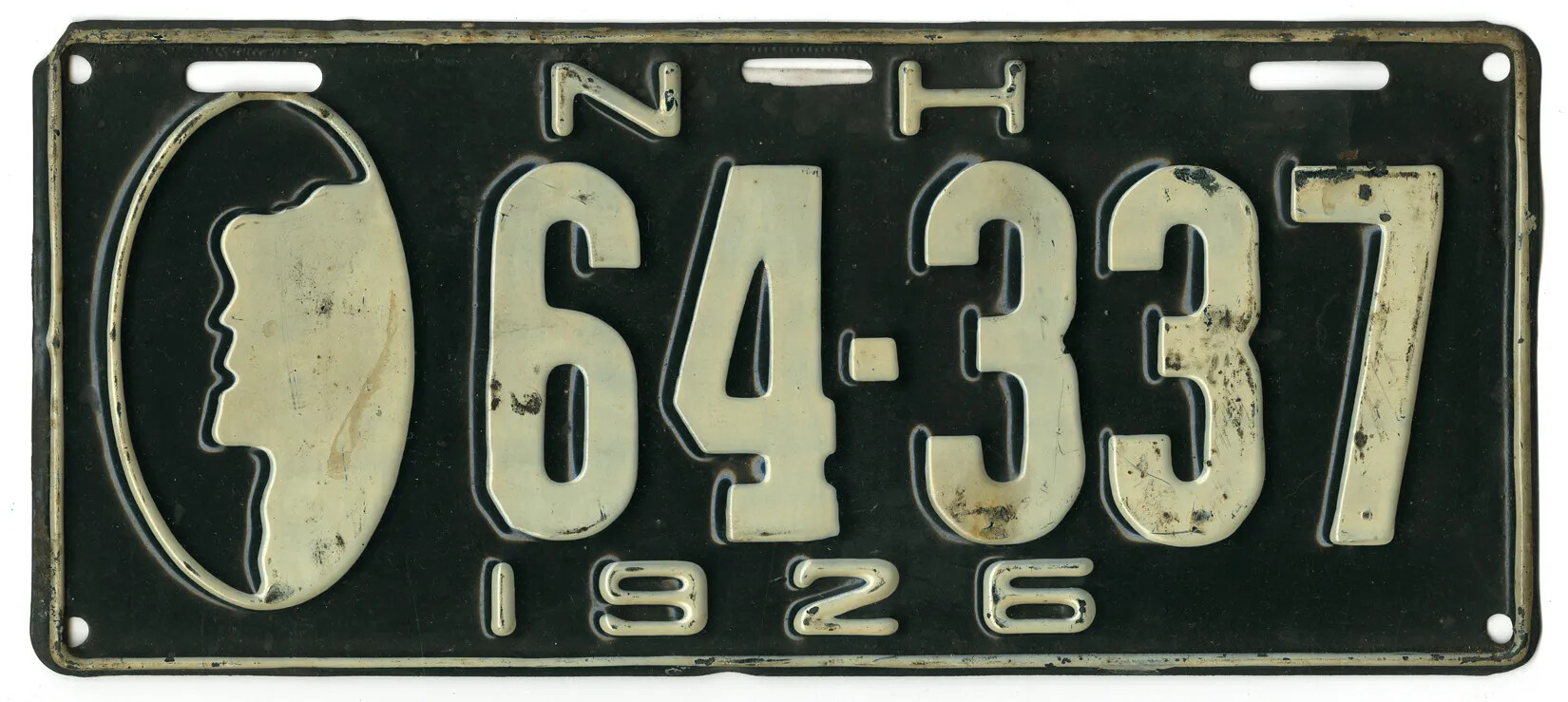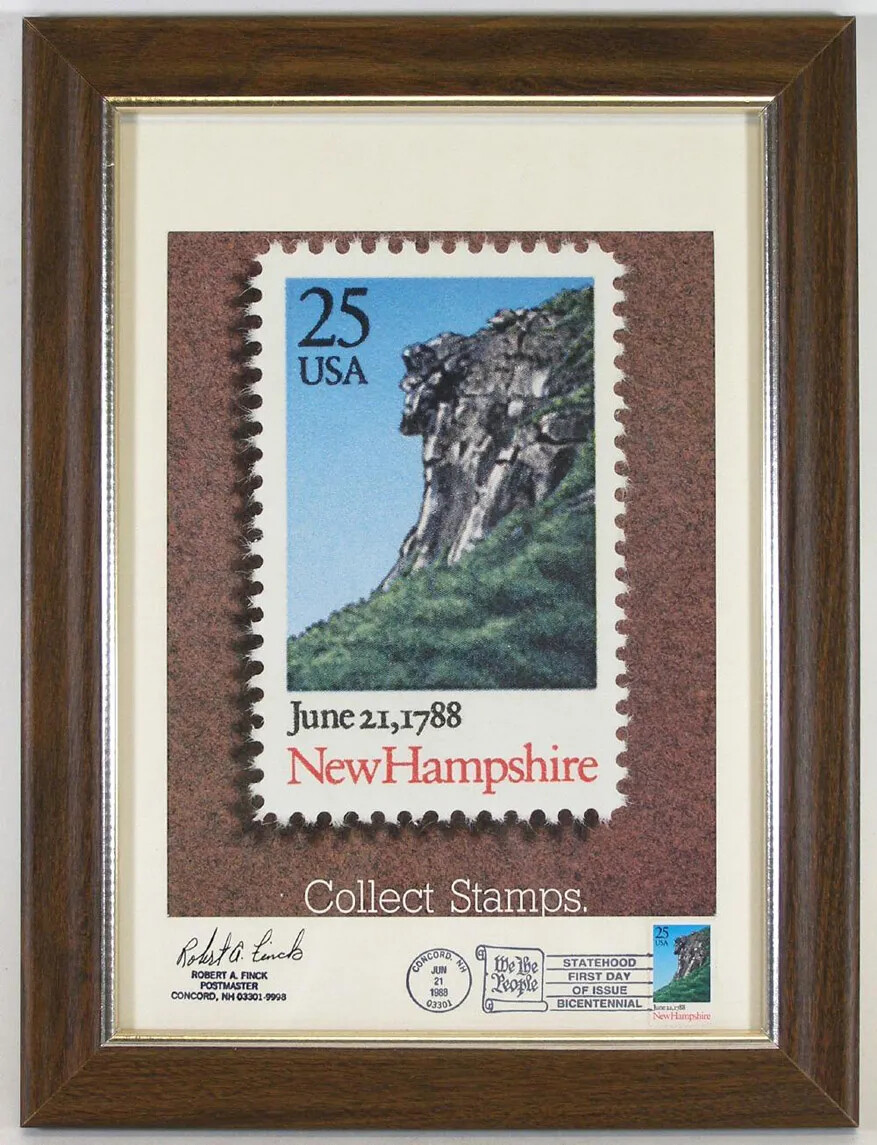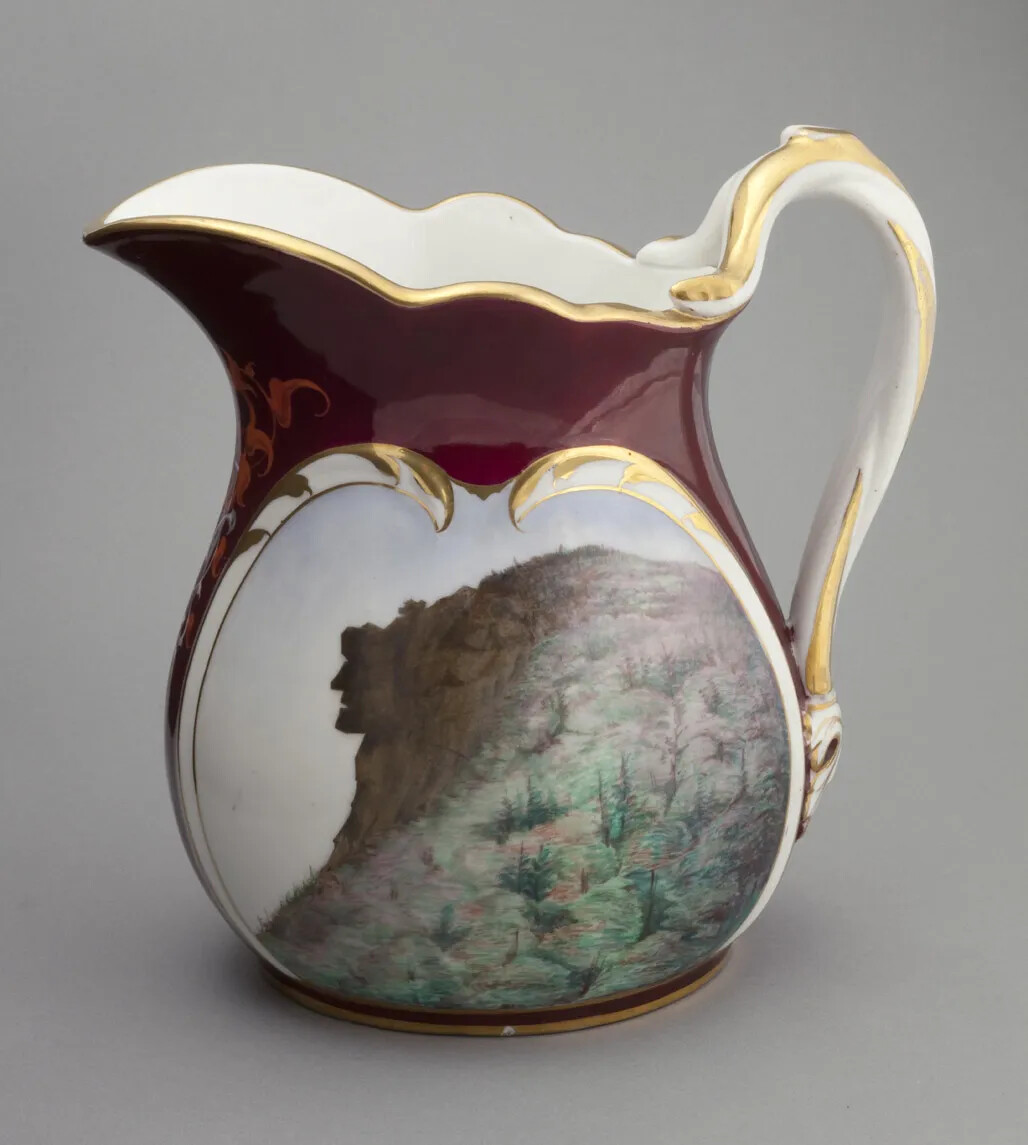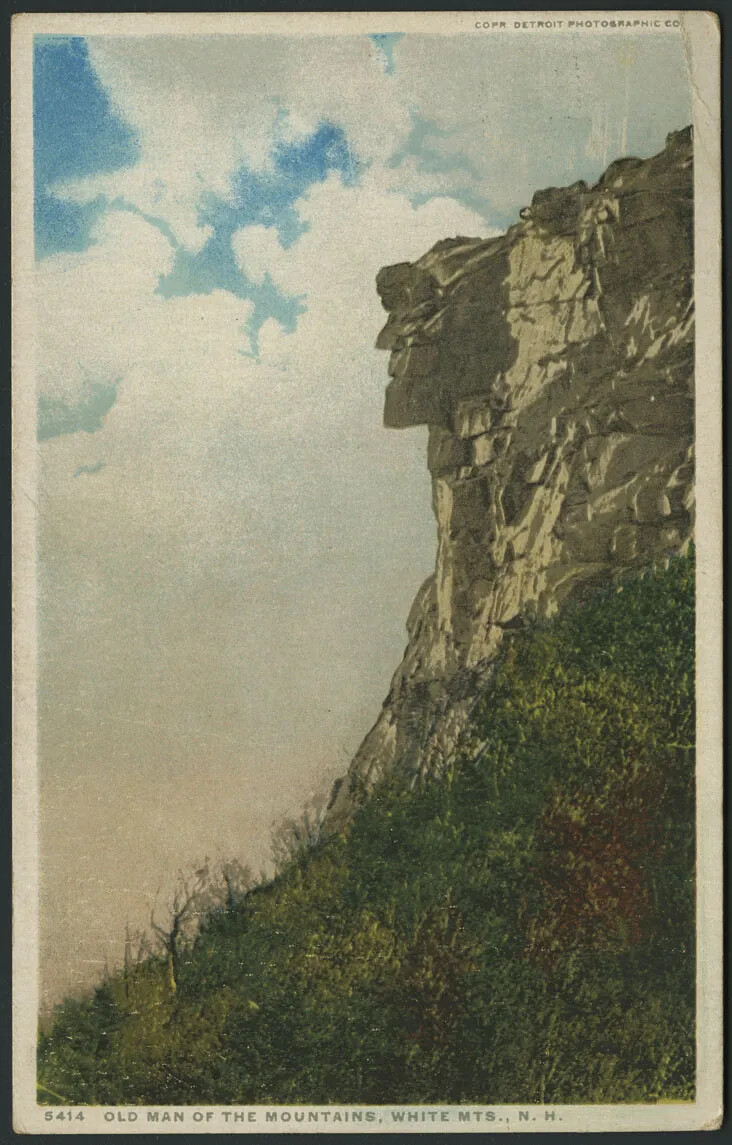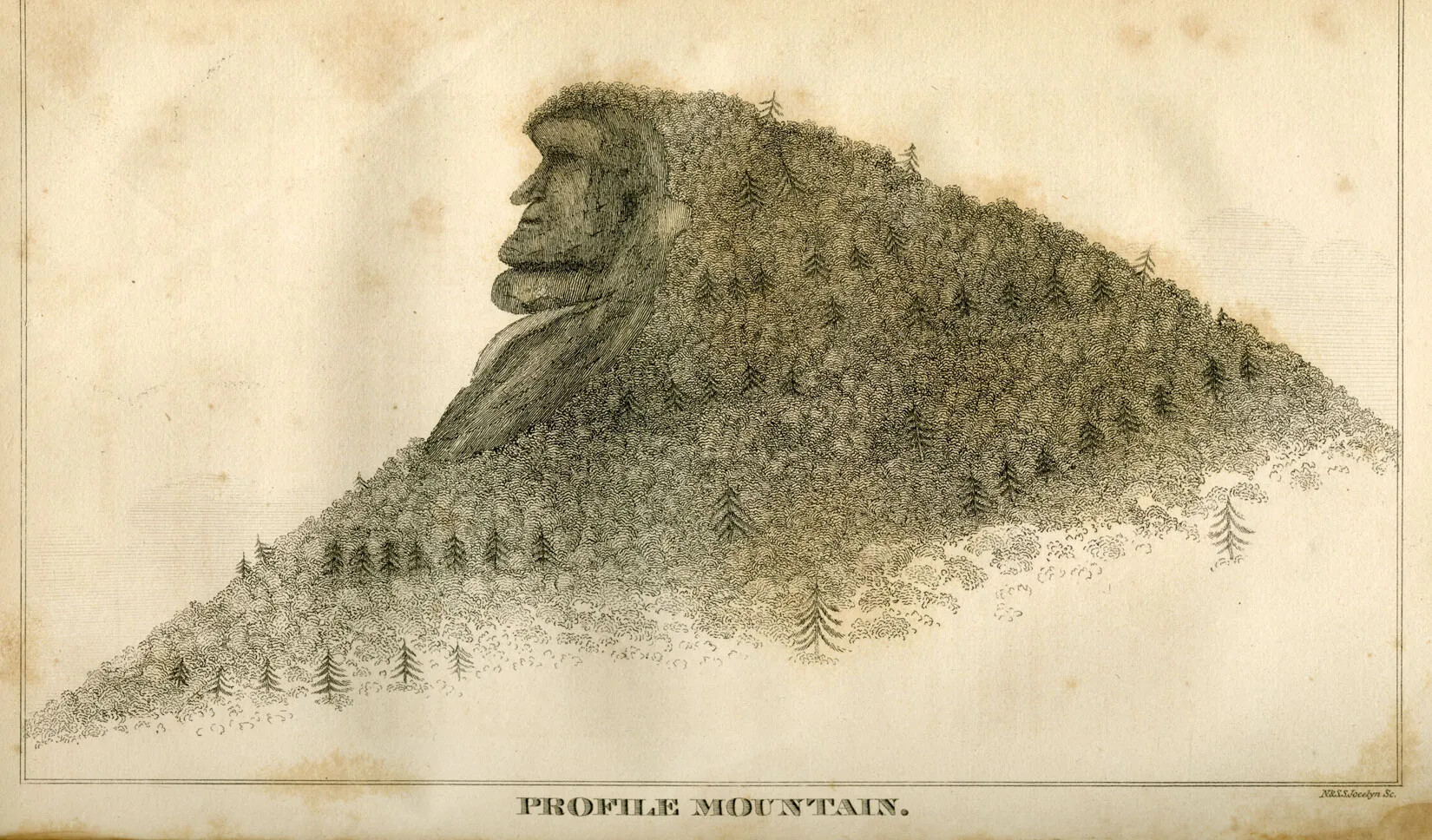Primary Source Set - Old Man of the Mountain
Though its exact age at the time of its fall from the side of Cannon Mountain is debatable, we know the remarkable rock formation known as the Old Man of the Mountain looked out over Franconia Notch for thousands, if not millions, of years. It inspired writers, artists, musicians, and politicians, not to mention the tens of thousands of visitors and hikers who explored the Notch every year for the purpose of seeing it themselves. Officially named a state emblem in 1945, the rugged “face” of the Old Man was widely embraced as a miraculous symbol of the character of the state of New Hampshire.
Background
Geologists have determined that what viewers perceived as the profile view of the forehead, nose, mouth, and chin of a man’s face jutting out from the side of Cannon Mountain were actually five serendipitously placed layers of granite. Anecdotes about the first sighting of the Old Man abound, but the granite profile was first seen—other than presumably by Native Americans—around 1805 when it was first noticed by members of a surveying party working and camping in Franconia Notch near Ferrin’s Pond (later renamed Profile Lake). Just one or two members of the party happened to be in just the right spot, looking in just the right direction to see the remarkable face.
The first appearance of the Old Man in print did not appear until 1828, when an issue of the American Journal of Science & Arts published a sketch and description of the natural wonder. Around the same time, New Hampshire experienced a boom in tourism as travelers eager to explore the White Mountains prompted expansion of railroads and the construction of inns and hotels. The “profile” on Cannon Mountain, which was then called Profile Mountain, was one of the White Mountains’ most popular attractions and also inspired the naming of the nearby lake, one of the region’s grandest hotels, and even a branch of the railroad.
While people enjoyed viewing the Old Man of the Mountain from the ground below, its exact location was not pinpointed until 1872 when members of the Appalachian Mountain Club hiked to its ledges. The excitement about the discovery was tempered by the news that the forehead ledge seemed to be separating from the mountain. In 1916, Edward Geddes, a stone mason from Massachusetts, installed the first set of turnbuckles that secured the forehead ledge to the cliff.
Over the next 87 years, the Old Man of the Mountain would require many more repairs. In 1987 Niels Nielsen, who had been overseeing and making annual repairs since the 1960s, was named the official caretaker of the Old Man of the Mountain. Nielsen and his family, particularly his son David who succeeded him as official caretaker in 1992, and daughter-in-law Deborah, cared for the Old Man of the Mountain until its ledges collapsed sometime in the early morning hours of May 3, 2003. Today, visitors to Franconia Notch can still get a glimpse of the Old Man by using special steel “profilers” set up at the viewing site.
This primary source set guide can be used in several ways to explore the Old Man of the Mountain. It is not necessary to use all sources in a set to create a meaningful inquiry. Rather, educators are encouraged to select—or have their students select—the sources best suited to your project.
Additional Resources
- Gfroerer, John, dir., Family Profile: Taking Care of the Old Man (Concord: Accompany, 1996), DVD, 25 min.
- Hancock, Frances Ann Johnso,. Saving the Great Stone Face: The Chronicle of the Old Man of the Mountain, ed. Ruth Ayres-Givens (Canaan: Phoenix Publishing, 1984).
- Heald, Bruce D., 101 Glimpses of the Old Man of the Mountain (Charleston, S.C.: History Press, 2009).
- Hutchinson, Robert, The Old Man of the Mountain, (San Francisco, C.A.: Browntrout Publishers, 2003).
- Melman, Peter, Uniquely New Hampshire (Chicago, I.L.: Heinemann Library, 2004).
- Timeline of New Hampshire History, New Hampshire Historical Society, nhhistory.org/Timeline.
Focus Questions
In addition to our general suggestions for using primary source sets, consider giving students one of the following prompts for an inquiry using this primary source set about the Old Man of the Mountain.
-
1Why is the Old Man on the Mountain a symbol of New Hampshire?
-
2Do you think the Old Man should continue to be a symbol of New Hampshire even though it has fallen? Why or why not?





